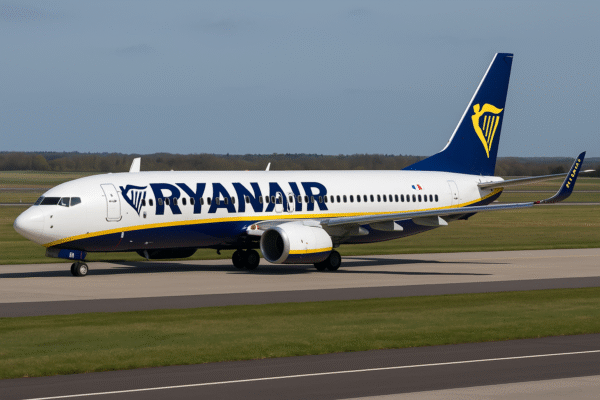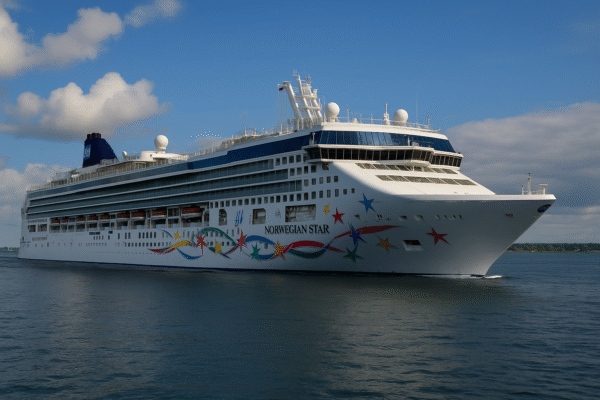New York City, July 14, 2025 — The transatlantic cruise aboard Norwegian Star has successfully resumed its scenic 14-night journey from New York to Reykjavik after a temporary technical disruption left the vessel briefly adrift in the Hudson River. The cruise ship, operated by Norwegian Cruise Line (NCL), experienced a propulsion system failure just hours after its departure from the Manhattan Cruise Terminal on July 12, prompting an emergency return to port.
The Norwegian Star, which set sail at 4:00 p.m. Saturday, was initially bound for a multi-country itinerary featuring Canada’s East Coast, Greenland’s southern fjords, and the volcanic marvels of Iceland, offering passengers an unforgettable exploration of the North Atlantic. The itinerary includes stops in Halifax, Sydney, Prince Edward Island, Nuuk, Paamiut, and ultimately Reykjavik, where the cruise is scheduled to conclude on July 26.
Sudden Technical Snag in the Hudson
Just hours into the cruise, while sailing northbound on the Hudson River, the Norwegian Star lost propulsion power—bringing the ship to a standstill. Passengers reported a temporary loss of ventilation, lighting, and running water as New York’s temperatures climbed into the upper 80s Fahrenheit (around 31°C), compounding passenger discomfort.
Despite the inconvenience, no injuries or medical emergencies were reported. According to multiple passengers and crew statements, the crew remained calm and professional throughout, managing onboard conditions while awaiting assistance.
The vessel was towed back to the Manhattan Cruise Terminal with the help of two tugboats under the coordination of the U.S. Coast Guard. Emergency protocols were activated, and technical engineers boarded the ship to assess and repair the failure.
Fault Repaired and Ship Cleared to Sail
By 12:30 a.m. on Sunday, July 13, less than 10 hours after the incident, the propulsion issue had been resolved, and the U.S. Coast Guard cleared the ship to resume its voyage. Norwegian Cruise Line confirmed in a statement that the technical malfunction was addressed promptly and that the ship had re-departed safely.
Despite the initial setback, the cruise line emphasized that the itinerary remains intact. The vessel is now sailing with a full sea day before its scheduled arrival in Halifax, Nova Scotia on July 14, in line with the original timetable.
Mechanical History and Ongoing Reliability Questions
This is not the first time the Norwegian Star, launched in 2001, has faced propulsion-related issues. The ship utilizes Azipod® propulsion systems, an advanced technology designed to enhance maneuverability and fuel efficiency. However, these units have historically been subject to technical faults. Norwegian Cruise Line notably received a $159 million settlement in 2022 following litigation over repeated Azipod failures across its fleet.
While it is not yet confirmed whether the latest malfunction is connected to the Azipod units, the incident has reignited discussions about the long-term reliability of the technology on aging cruise ships.
Cruise Continues as Scheduled
Following the brief interruption, spirits onboard have lifted as the ship continues toward its picturesque destinations. Passengers can still look forward to discovering Canada’s historic port cities, the glacial beauty of Greenland’s west coast, and the geothermal wonders of Iceland.
Upcoming stops include:
- Halifax, Nova Scotia (July 14) – A maritime city known for its rich history and vibrant waterfront.
- Sydney, Nova Scotia
- Charlottetown, Prince Edward Island
- Nuuk and Paamiut, Greenland – Offering rugged landscapes, ice fjords, and indigenous cultural encounters.
- Reykjavik, Iceland – The capital city famed for its proximity to geysers, waterfalls, and volcanic landscapes.
Norwegian Cruise Line has assured guests that onboard entertainment, dining experiences, and shore excursions remain unaffected by the temporary delay. Efforts are underway to ensure the remainder of the journey is seamless, with enhanced guest services provided to compensate for the brief inconvenience.
Lessons in Maritime Resilience
The swift resolution of the technical fault highlights the effectiveness of modern cruise ship emergency response systems and the vital role of maritime safety authorities like the U.S. Coast Guard. In an industry where megaships transport thousands across vast ocean routes, occasional technical issues are not uncommon—but how they are managed makes all the difference.
Passenger accounts have since credited the crew for maintaining calm and transparent communication during the delay, a factor crucial to mitigating panic and ensuring onboard safety.
Conclusion: Atlantic Adventure Back on Track
Back on course and under full propulsion, Norwegian Star is sailing once again through the Atlantic, promising an extraordinary voyage through some of the North Atlantic’s most scenic and culturally rich ports.
Despite the rocky start, passengers now have the opportunity to enjoy the full scope of the planned itinerary—breathtaking coastlines, historic cities, and rare northern landscapes.
As NCL continues to modernize its fleet and enhance onboard systems, incidents like these serve as reminders of both the challenges and resilience involved in luxury ocean travel.
For more travel news like this, keep reading Global Travel Wire
















